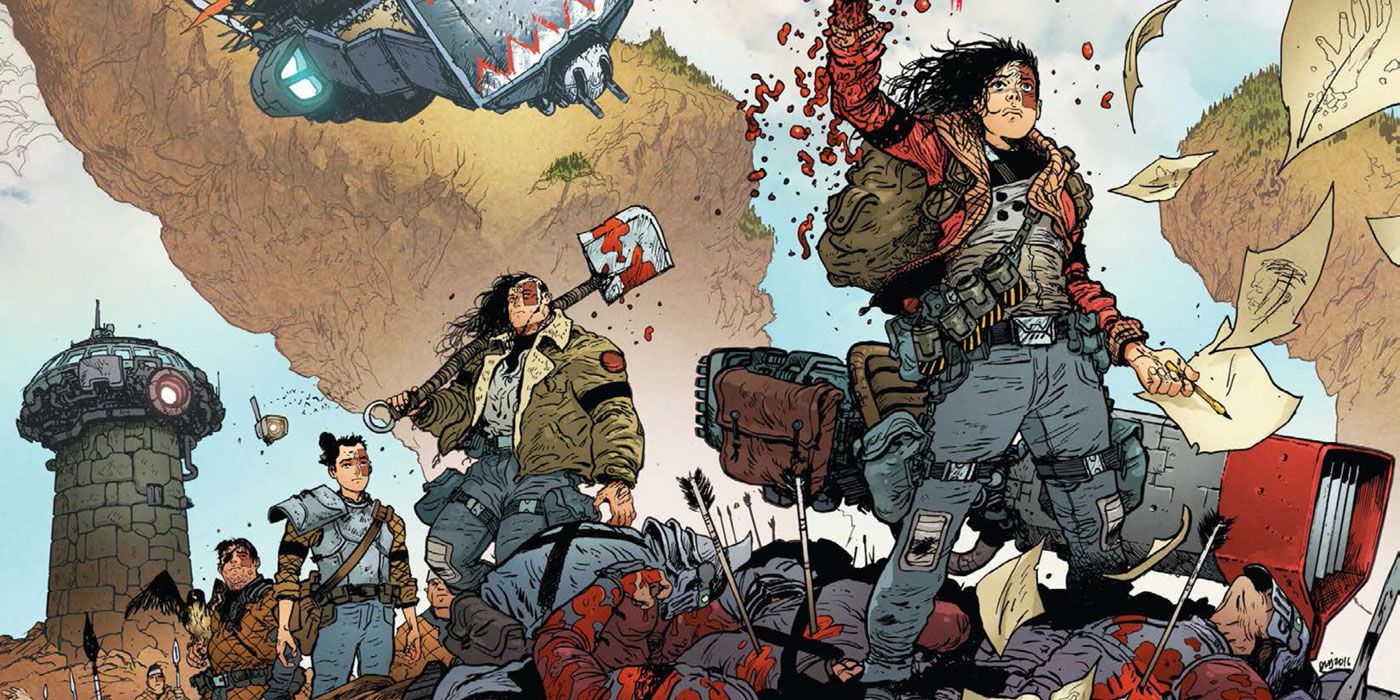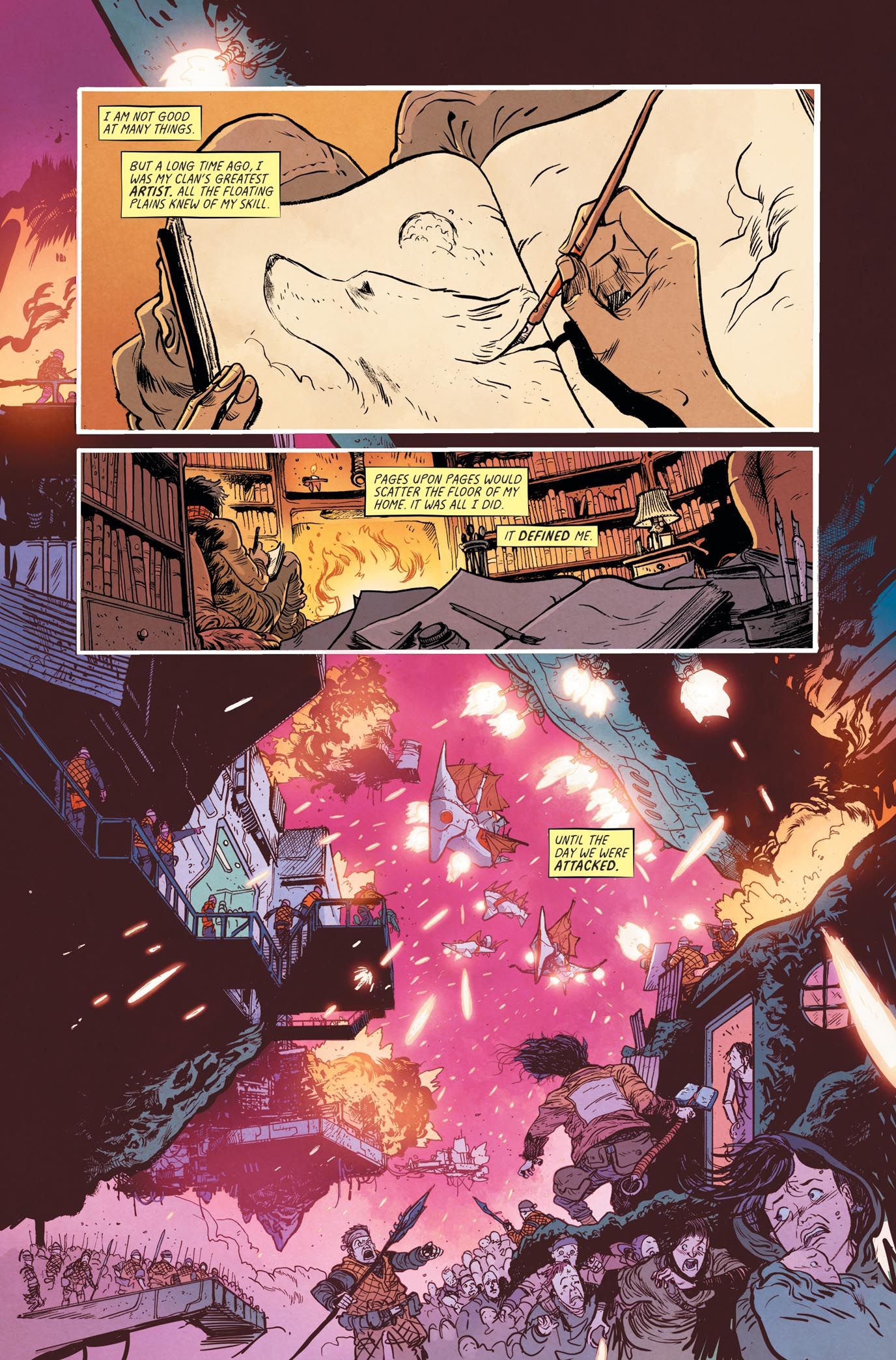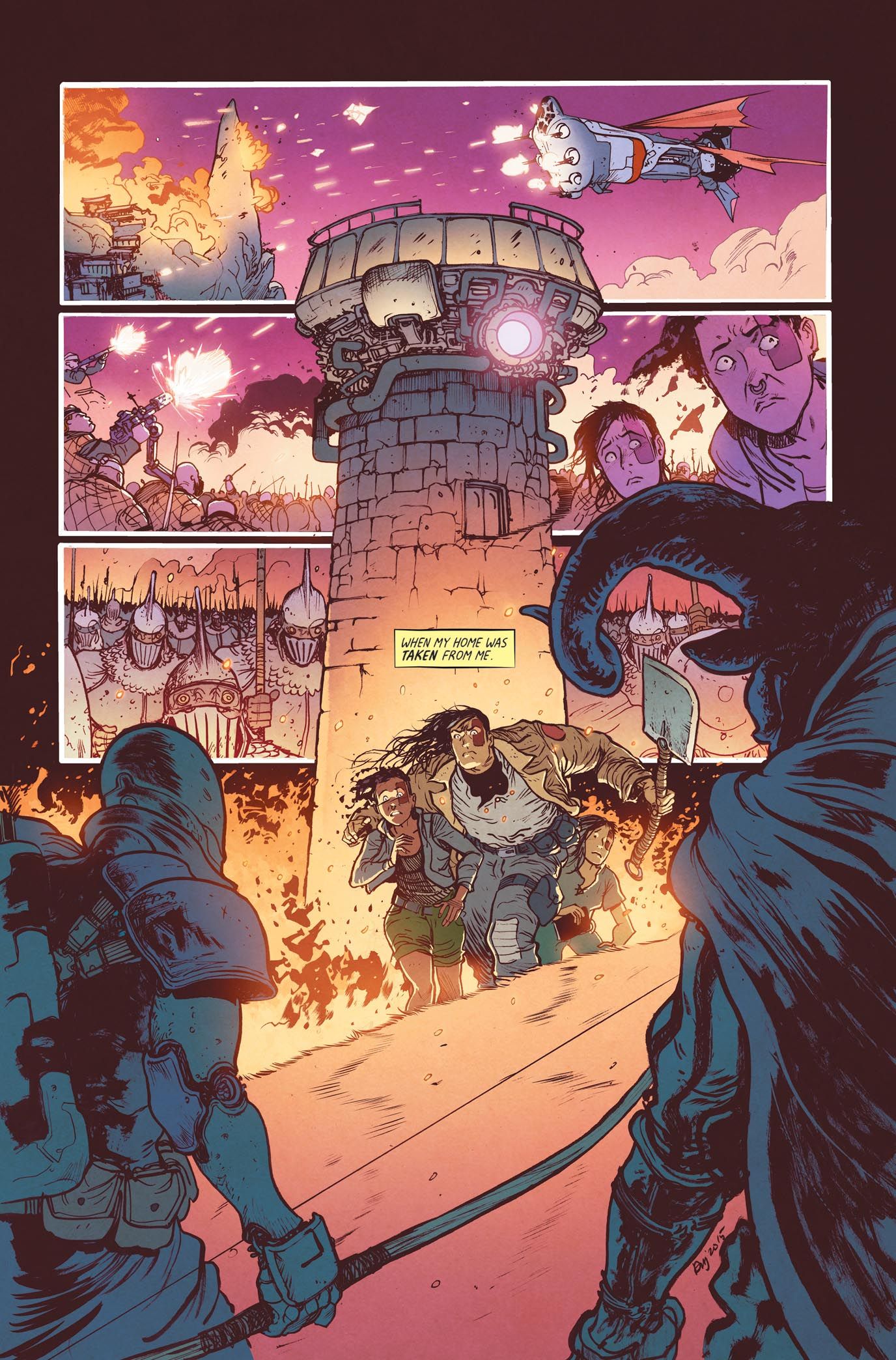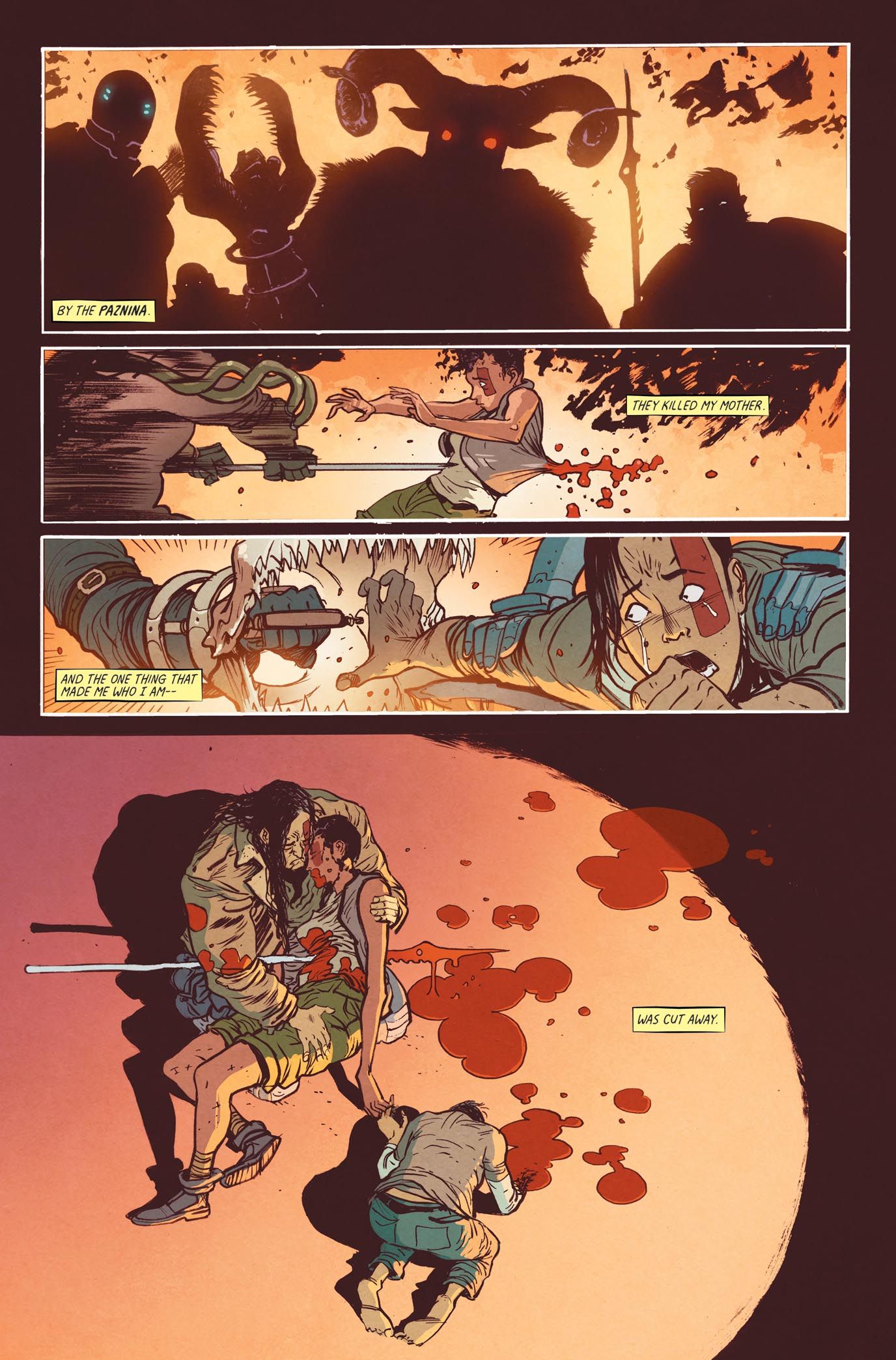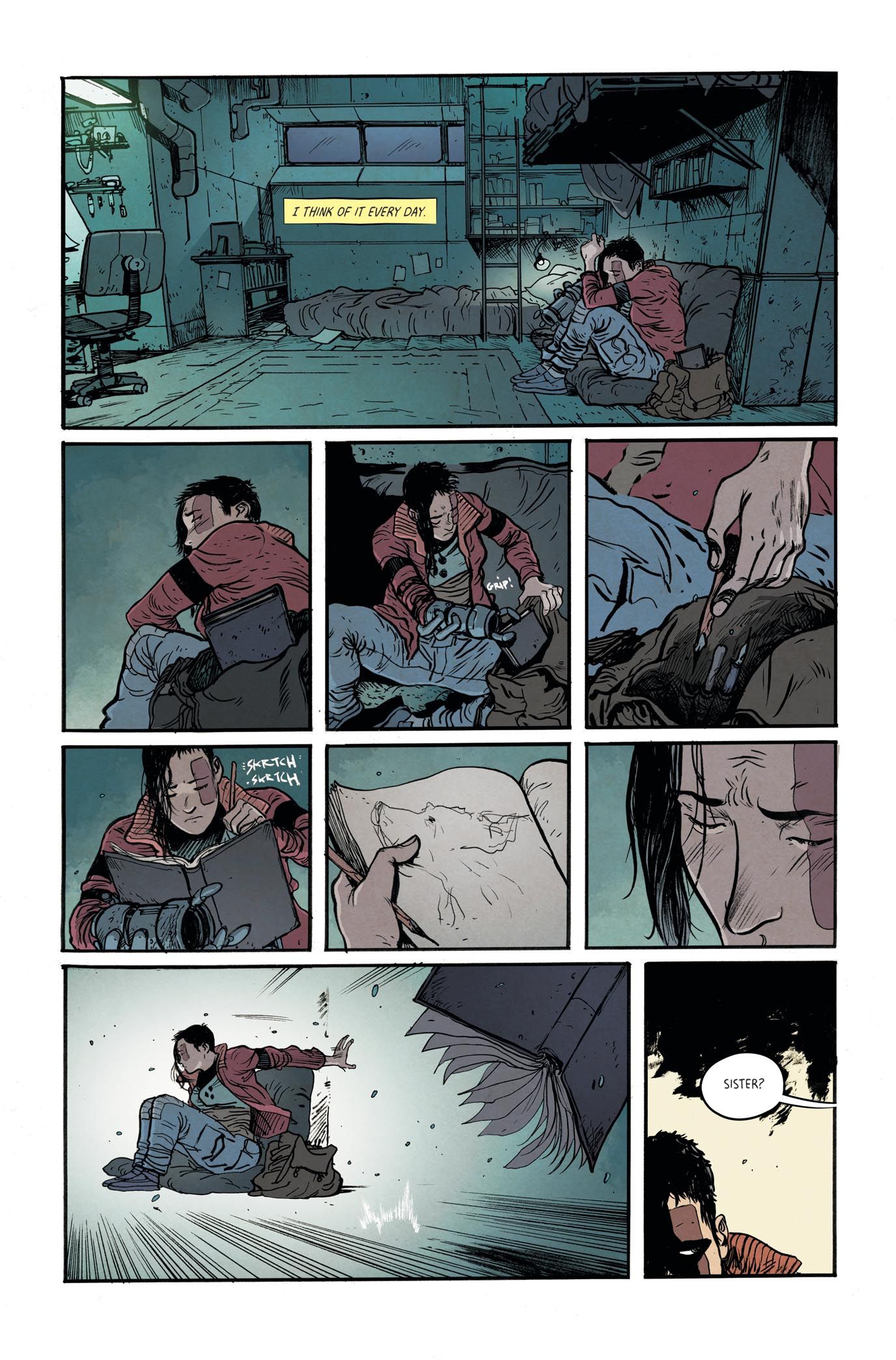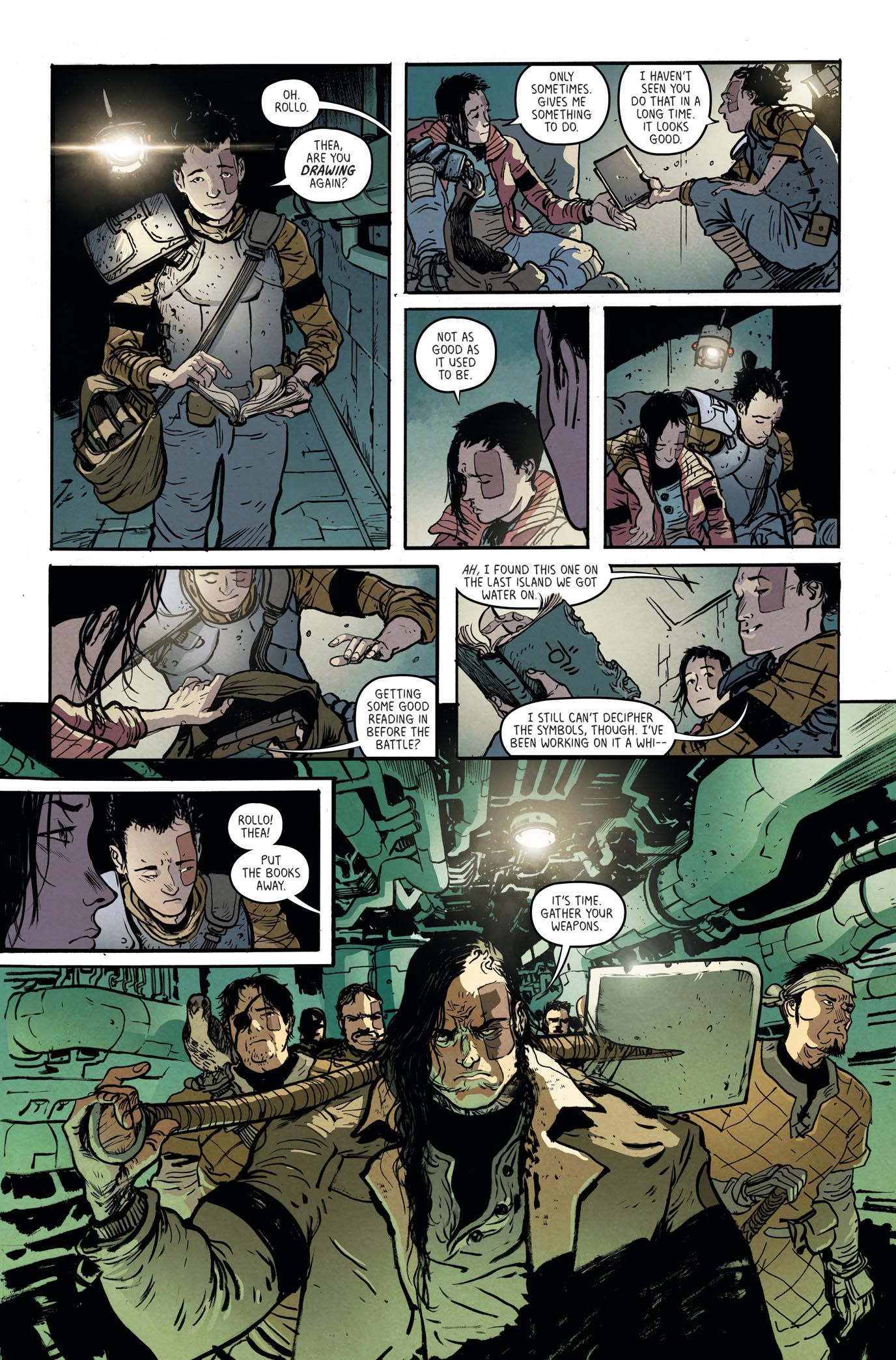Launching this week from Image Comics, Skybound Entertainment's "Extremity" aims to present a revenge story unlike most others. Centering on the brutality of war and the opposing tribes caught in a conflict that divides families, the new series from writer/artist Daniel Warren Johnson and colorist Mike Spicer combines elements of fan-favorite manga and science-fiction to serve up a post-apocalyptic tale as enticing and original as it is violent.
RELATED: Skybound Announces Image Comics Sci-Fi Epic: Extremity
CBR had the opportunity to speak with Johnson about "Extremity" in the lead up to the first issue's release on March 1. Over the course of our conversation, we discussed the series' real-life origins, and its unconventional spin on a revenge tale. Johnson also explained how anime inspired "Star Wars" inspiration for the series' post-apocalyptic visual aesthetic, and more.
CBR: Where did the idea for Extremity originate?
Daniel Warren Johnson: I had been working on "Space-Mullet" for more than a year -- it was super tongue and cheek-ish, kind of like a fun rock and roll vibe, not very serious. Even though it would get dark sometimes, I never purposefully got serious with it; it was just kind of an experiment for me, which I like doing. Doing "Space-Mullet" for a year, [I decided] I wanted to start doing something a little more serious. I was just keeping my eyes and ears open for any inspiration for any kind of story that really got me thinking -- because it's hard for me to create something from nothing -- and my wife told me about an NPR interview that she heard around that time by a Jewish woman who was in the Nazi concentration camps. She's famous for forgiving her Nazi captors. What really intrigued me about it was that the rest of the global Jewish community said, "You're not allowed to forgive these people." These people who would be considered her family more or less turned their back on her, and I thought that was really interesting and made me think about what causes families to turn against each other.
["Extremity"] has had many iterations over the years -- it took me two and a half years to really figure out what I want to do. It got me thinking, and then basically I created a world to fit what you see in "Extremity." The emotional component for me, being an artist, you know, is, what does the main character feel losing her hand? That's kind of the emotional core of the story. That's what drives it home for me. That's the only way that I could make another revenge story work.
Why is the series called "Extremity"?
I had been trying to find a title for a really long time, something that would show the themes behind the book -- how far are you willing to take this quest of revenge? I can't really take credit for the title. Our friend and comic book artist, Bryan Lee, was spit-balling "That's it, that's the perfect title." I wish I could say I came up with it myself, but I did not.
What is it about revenge stories that you, personally, find so compelling?
I think there's something really interesting about how -- when you see a movie like "John Wick," there's a righteous feeling, at least for me, when you see a movie like that. It's like, this person who kills John Wick's dog is gonna get it, and he's gonna get it so hard, and it's gonna be great, and he's gonna deserve it. Eventually, after seeing a lot of these, like "Kill Bill," there's really no relation to real life. People who go through revenge in non-Hollywood, non-novel experiences, it's never really that clean, and there's not this feeling of victory. It seems like in American storytelling there's like this completely righteous, anything goes attitude in revenge stories in general. I was trying to find a way to take this genre that I really loved, and I think does have value, but also instill it something that's a little more personal and also…make something that people haven't seen before when it comes to revenge stories. Maybe it's a little heavy-handed, but this is the story that was in my heart and it had to come out.
There are many things that I think in "Extremity" will make people go, "Wait, I thought this was a revenge story." And it is a revenge story, but it's a revenge story that maybe has a bit more element of -- I think you know what I'm trying to say! When you watch a revenge movie, or you read a novel or a comic, there's plenty of times and plenty of instances where you're enjoying yourself, but everybody knows what's going to happen in the end -- which isn't a bad thing -- but I wanted to try and throw people for a curve through "Extremity."
Why was it important for your story to focus on family?
In line with me trying to buck the trend with revenge stories, as I was kind of developing it in my head, it started sounding like "Kumbaya.". Everybody's getting along, it's going to be awesome -- and, of course, that's not how anything in life is. Part of the reason that's so difficult is, there's so many ways to look at something. While I'll feel one way about something that happened, another family member may feel differently. It was a way to bring more viewpoints to the table, instead of it just being Thea's point of view, and only Thea's. We have different characters that are responding to crisis in different ways. That makes it easier for Thea's personality to bounce off -- it allows for drama. It's sort of character-driven over McGuffin-driven.
What's so evil about the villains of "Extremity"?
I think it's just their willingness to engage in brutality. You meet people in life, and you experience people, and there's just like this darkness about them. You don't really know where it comes from, and maybe they've made decisions in life that led to this path. There's these people in life that just have this energy about them that's very negative, and those are the villains in "Extremity." [But] it's not totally cut and dry.
What's your inspiration for the visual aesthetic of the series, combining monsters, technology, and this post-apocalyptic world?
When I first came up with the story concept, I started crafting a world that would fit that as well as I could. One of the reasons that you have the Paznena was that it looked kind of Middle Age-y, because they reside in a world where the Roto do not. World-building and inspiration is awesome, and it's all super important. It's kind of like window dressing; without window dressing, you've got a really boring window, so I wanted to try and take different visual inspirations to make that exciting. I took a lot of inspiration from medieval architecture and armor, and I also did a lot of "Star Wars"-style scrappiness, piecing things together. You've got one side that's kind of Middle Age-y, and another side that's all scraps and manages what they can, and put them together, so you have two very distinct visuals for each side. As soon as you see an outfit or location you instantly know where you're at.
In a comic, anything you can highlight to show people without telling is a positive thing. And, of course, "Akira," specifically the comic, has been monumental. I've been reading that forever. "Appleseed," of course, and a lot of manga. I love the tattered look of "Children of Men." There's a lot of different stuff, but those are definitely big inspirations.
What does colorist Mike Spicer bring to the series?
I actually had a colorist before Mike, and the deadlines didn't work out. We were looking for a new artist -- Mike Spicer was kind of a happy accident, we had another colorist, Brian Level, who recommended me to Mike. We gave him a try, and he completely blew us away. It was a really happy surprise. Ever since then, it's been a fantastic experience working with him. He brings a lot of new ideas to the table that I didn't think would work, and they totally do -- that's 50% of the time, and the other 50% he is in my brain, exactly putting down the pallete that I imagine. I give him a few sentences before he starts coloring the issues, to give sort of the vibe and feel that I want, and he takes it to a whole new level. It's amazing!
"Extremity" #1 arrives in stores on March 1.

